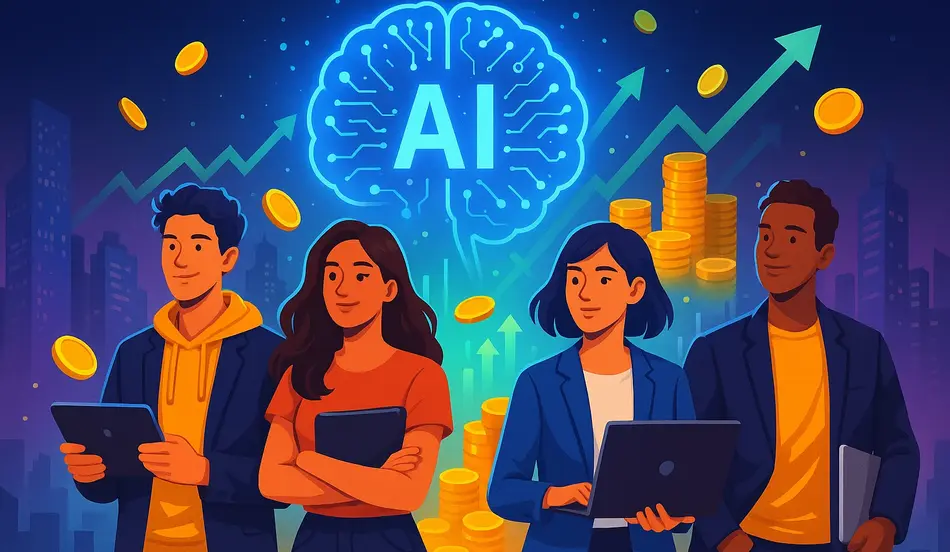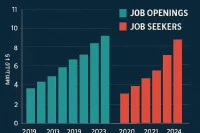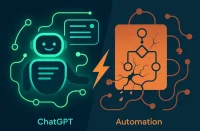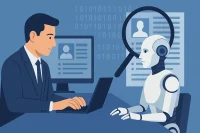For most young Americans, the job market in 2025 feels like a maze of obstacles: hiring freezes, automated application systems, and dwindling entry-level openings. Yet in a striking paradox, a small but growing group of highly skilled AI talent are landing salaries close to $1 million a year straight out of school.
Their secret? Expertise in artificial intelligence.
Wall Street, Silicon Valley, and Fortune 500 companies are waging bidding wars for the most promising AI engineers, researchers, and data scientists. For this elite cohort, the transition from college or graduate school to wealth is instantaneous. For the rest of their generation, however, the contrast is stark: underemployment, slow wage growth, and limited career paths.
This widening divide reveals not just a labor-market anomaly but a structural transformation in how talent is valued and compensated in the AI era.
The Rise of Million-Dollar AI Packages
Stories of 20-something engineers making $800,000 to $1 million annually once sounded like Silicon Valley myths. Today, they are verifiable realities. Compensation packages for elite AI hires often include:
- Base salaries ranging from $250,000–$400,000.
- Signing bonuses as high as $200,000.
- Stock options or equity grants worth hundreds of thousands annually.
- Performance bonuses tied to AI breakthroughs or product launches.
The total can easily reach or exceed seven figures annually, particularly at hedge funds, Big Tech giants, and high-growth AI startups.
“This is the hottest talent market I’ve ever seen in 20 years of recruiting,” says one headhunter specializing in data science. “Companies know that one extraordinary AI engineer can generate billions in value.”
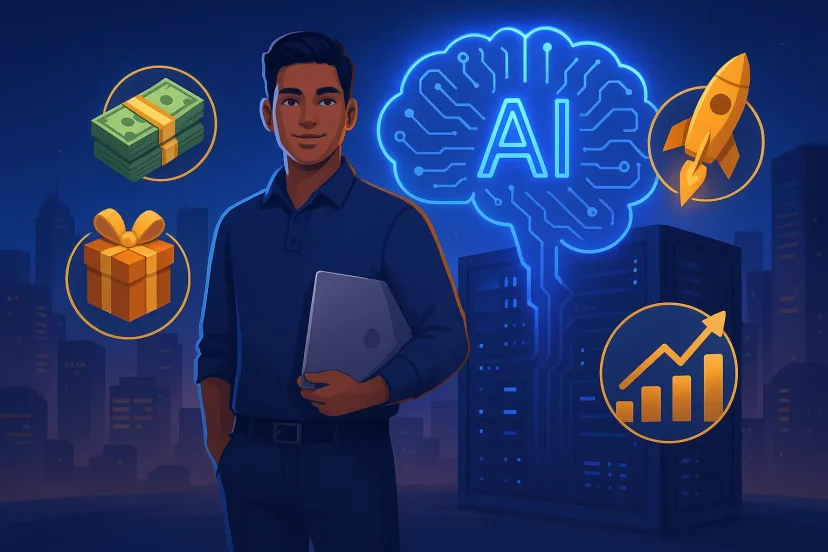
Who Gets These Jobs?
Not every AI graduate is courted with million-dollar offers. The beneficiaries are typically:
- Graduates of elite universities such as Stanford, MIT, and Carnegie Mellon.
- Researchers with published work in areas like generative AI, reinforcement learning, or robotics.
- Competitors in global contests such as Kaggle or ICPC, where top performers attract recruiter attention.
- Interns at top AI labs like OpenAI, Anthropic, DeepMind, or Meta AI.
For these individuals, recruiters often begin outreach before they even graduate, much like professional sports drafts.
Why Companies Pay So Much
1. Scarcity of Talent
Despite the AI hype, true experts are rare. Only a small percentage of graduates have deep expertise in cutting-edge machine learning algorithms, neural network optimization, and large-scale model deployment.
2. High Economic Leverage
AI breakthroughs have immediate and massive financial impact. A single innovation in algorithmic trading, logistics optimization, or AI-assisted drug discovery can translate into billions in revenue or cost savings.
3. War for Talent Across Industries
The demand isn’t confined to Big Tech. Hedge funds, law firms, manufacturing giants, and even healthcare systems are aggressively competing for AI specialists to automate, predict, and optimize.
4. Prestige and PR Value
Landing a “superstar” AI researcher provides not only technical benefits but also signals innovation to investors and clients. Some companies view these hires as branding exercises as much as labor investments.
The Harsh Contrast for Everyone Else
While a select few skyrocket into seven-figure incomes, the broader Gen Z workforce faces sobering realities:
- Underemployment: Over 40% of recent graduates are in jobs that don’t require a degree.
- Hiring Slowdowns: Entry-level postings fell by double digits year-over-year, even as applications surged.
- AI as Competition: Many graduates find the jobs they hoped to apply for—like junior coding, marketing, or customer service—are increasingly automated.
This divergence risks creating a two-tiered labor market: one for AI elites and one for everyone else.
Industry Breakdown
1. Hedge Funds and Finance
Quantitative hedge funds are leading the pay race, offering packages exceeding $1 million to young AI talent. For firms trading billions daily, an algorithm that improves returns by even 0.5% is worth the investment.
2. Big Tech
Google, Microsoft, and Amazon continue to pay handsomely to defend their AI dominance. Equity packages at these firms often outpace those of finance.
3. Startups
While startups can’t always match salaries, they offer lucrative equity stakes. Some young hires take “lower” pay in hopes of hitting the jackpot through IPOs or acquisitions.
4. Non-Tech Industries
Healthcare, logistics, and retail are adopting AI aggressively. While their offers are usually smaller, competition for top specialists is pushing salaries higher across the board.
Need AI Talent for Your Team?
Post a job on WhatJobs and reach thousands of top candidates today.
Post a Job Now →Historical Context: Not the First Talent Boom
This phenomenon echoes earlier eras:
- 1980s Wall Street: Ivy League grads were recruited into finance with six-figure bonuses.
- 1990s Dot-Com Boom: Young programmers amassed fortunes through stock options.
- 2010s Tech Surge: App developers and early employees at startups like Uber and Airbnb became millionaires.
But the AI boom is unique in speed and intensity. Salaries have soared not over decades but in just the last three years, making it the fastest labor-market escalation in recent memory.
The Risks of the AI Pay Bubble
Unsustainable Expectations
Not every AI researcher will yield billion-dollar breakthroughs. Some analysts warn that inflated salaries may resemble the dot-com bubble, vulnerable to correction if AI hype outpaces practical returns.
Equity Volatility
Many packages rely heavily on stock options. If AI startups collapse or Big Tech shares falter, some of the promised wealth may vanish.
Resentment Among Peers
Within companies, disparities between AI specialists and other staff risk fueling morale issues, as coworkers question why some earn 10 times more.
The Social Divide
The AI gold rush is deepening generational inequality:
- Winners: A few hundred or thousand young AI experts entering the workforce with extraordinary wealth.
- Losers: Millions of peers left scrambling for fewer jobs, often in industries where AI is displacing human labor.
This gap could shape not only the workforce but also politics, as frustration builds among those excluded from the AI boom.
What Experts Are Saying
- Economists: “The wage gap between top AI talent and average graduates is historically unprecedented.”
- Recruiters: “We’re seeing offers go out before candidates even finish their PhDs.”
- Labor Advocates: “We can’t have a labor market where only the AI elite thrive while the majority stagnates.”
Potential Policy Responses
- Expand AI Education: Broaden access to AI and machine learning courses at universities and community colleges.
- Public Investment in Skills: Federal programs could subsidize training in AI-related skills beyond elite institutions.
- Regulation of Executive Compensation: Some advocate tying extreme pay packages to demonstrable economic contributions.
FAQs
Q1: Are all young AI workers making $1 million a year?
No. Only a small fraction at elite firms and hedge funds command these salaries. The majority earn more modest but still above-average incomes.
Q2: Why are companies willing to pay so much?
Because the potential economic payoff from a top AI innovation—whether in finance, healthcare, or logistics—can dwarf the cost of salary packages.
Q3: Could these salaries drop in the future?
Yes. If AI investments fail to deliver expected returns, salaries could deflate, particularly at startups.
Q4: What skills set apart the million-dollar AI hires?
Deep expertise in generative AI, neural networks, reinforcement learning, and large-scale system deployment. Publishing research and winning competitions also boost visibility.
Conclusion
The spectacle of 20-something AI engineers making seven figures while their peers struggle is more than a headline—it is a symptom of the labor-market transformation unfolding in real time. AI has not just created a new industry; it has reordered the hierarchy of talent, rewarding a small elite at levels once reserved for CEOs and professional athletes.
As companies continue to fight over this scarce pool, the question looms: will the AI gold rush spread opportunities more widely, or deepen divides between the haves and have-nots of the 21st-century workforce
